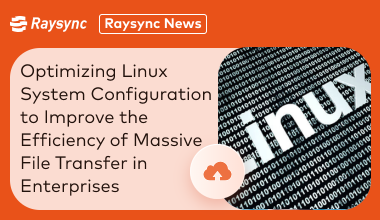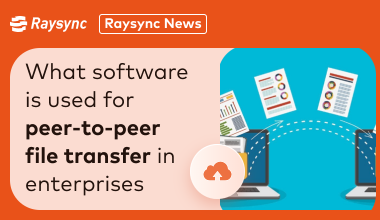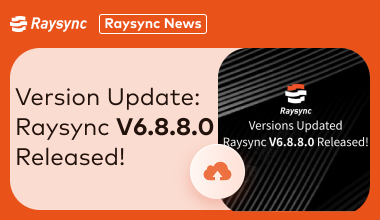Filter News
Raysync News

Raysync News
April 8, 2024【2024】What is the best photo cloud storage tool?
In the digital age, the importance of securely managing and storing photo files is especially important. This article will explore the best tools for securely uploading image files to cloud storage to ensure that professional assets are properly protected.

Raysync News
April 7, 2024How to Improve the Efficiency of Massive File Transfer by Optimizing Linux System Configuration
In today's data-driven business environment, Linux system serves as the operating system of choice for many enterprise servers. So how to improve the efficiency of massive file transfer by optimizing the Linux system configuration?

Raysync News
April 4, 2024Best Application Tools for Cloud-to-cloud Transfer in 2024
What is cloud-to-cloud delivery technology and why is it becoming increasingly important to businesses and individuals? In this article, we will explore the nature of cloud-to-cloud transport and cloud-to-cloud transport solutions.

Raysync News
April 3, 2024How to Screen Suitable Files During Synchronous File Transfer?
One issue with synchronizing file transmission is figuring out how to filter appropriate files. In synchronized file transmission, the filtering feature of Raysync Black & White List enhances intelligence and efficiency.

Raysync News
April 2, 2024[2024] Most Reliable FTP Alternative Upgrade Solution
Traditional FTP (File Transfer Protocol) has struggled to meet the demands of modern organizations for efficient, secure and reliable file transfers. To meet these challenges, more and more enterprises are seeking alternative upgrade solutions to FTP.

Raysync News
March 28, 2024Raysync V6.8.8.0 Large File Transfer System Update Released!
Raysync V6.8.8.0 is updated and upgraded with the latest version!

Raysync News
March 27, 2024How to ensure a stable minimum transfer speed during UDP file transfer?
Due to the inherent limitations of the UDP protocol, it is difficult to guarantee a stable minimum transmission speed. Therefore, how to limit the minimum speed of UDP transmission has become a technical issue worth discussing.

Raysync News
March 26, 2024How does Raysync utilize ProtoBuf for efficient data transfer?
Developed by Google, ProtoBuf has become a trusted choice for many companies and organizations. We are now bringing this important data format tool into view and exploring how it can be used in the application “Raysync”.

Raysync News
March 25, 2024What are the advantages of ACL attributes over UGO attributes?
Different operating systems have different permission control mechanisms that correspond to different file permission attributes, such as the well-known UGO attribute in Linux. What are the advantages of ACL attributes over UGO attributes?

